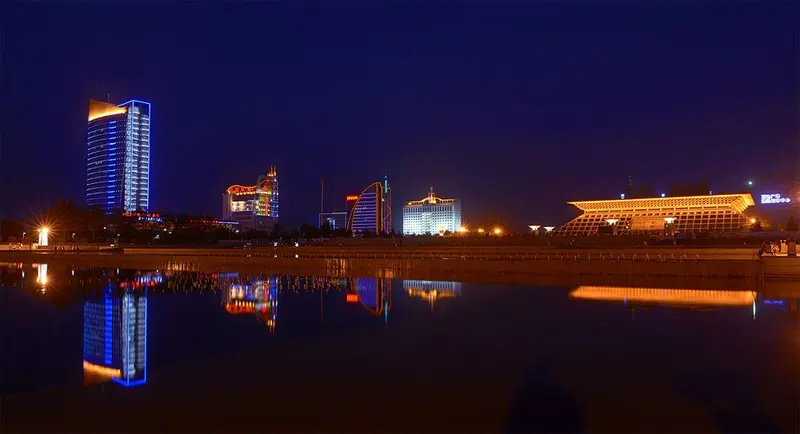Zhangde Prefecture City God Temple, also known as Weilinggong Temple, is the location of the Anyang Folk Museum. It was first built during the Northern Zhou Dynasty and has undergone multiple renovations throughout various dynasties. The temple complex is relatively large, featuring five courtyards and six main halls. Most of the original structures were destroyed in modern times, and the current buildings were mostly reconstructed in the 1980s. However, the main gate, built during the Ming Dynasty, was renovated in the 1980s and features a double-eaved hip-and-gable roof. The main hall structures were primarily built during the Ming and Qing Dynasties and underwent major repairs in the 1980s.
Han Weigong Temple
Han Weigong Temple, also known as Han Wang Temple and Zhoujin Hall, was first built during the Xining period of the Northern Song Dynasty. It is an ancient architectural complex built to commemorate the great achievements of Han Qi, a prime minister who served three emperors during the Northern Song Dynasty. The temple was destroyed by war during the Jin Dynasty and rebuilt on the original site during the Yuan Dynasty with a single-eave gable roof. It was renovated during the Ming and Qing Dynasties. To this day, the main hall still retains the beam structure of the Yuan Dynasty, which follows the natural curve of the wood. Zhoujin Hall was originally a hall built in the backyard of the state office when Han Qi returned to his hometown to serve as the governor of Xiangzhou. At that time, it was one of the four major gardens of the Northern Song Dynasty.
Hall 3 of the Anyang Ceramic Museum is a permanent exhibition hall showcasing Anyang ceramics. Other exhibition halls display four pieces related to the social life of the Shang Dynasty. Hall 1 on the second floor is the 'Anyang Fine Products - Anyang Historical Relics Exhibition Hall'; Hall 6 on the third floor is the 'Calligraphy Exhibition'; and Hall 7 on the third floor is the 'Red 'Hui' Glory - Badge Exhibition Celebrating the 70th Anniversary of the Founding of New China'.
The entire scenic area consists of two parts: the Yin Xu Palace Temple Ruins and the Yin Xu Royal Tomb Ruins. The Yin Xu Palace Temple Ruins is the main scenic area. The two parts are quite far apart, but there is a free shuttle bus within the scenic area that runs every half hour, and you can board with your ticket. Yin Xu is the site of the capital city during the middle and late Shang Dynasty. The Shang Dynasty established its capital here for 255 years. It is world-renowned for the discovery of oracle bones, with approximately 150,000 inscribed oracle bones unearthed here, making it the earliest site of oracle bone discovery in China. Yin Xu is also the excavation site of the world's largest bronze vessel, the Houmuwu Ding.











